Hisense U7KQ with a size of 100" is clearly a better television compared to the smaller variants. The proprietary VIDAA system has a similar interface to other TVs (e.g., with Google TV onboard). It operates quickly and smoothly. It doesn't freeze or contain errors. The built-in media player sometimes had difficulties functioning, though. It's worth looking at the app test, as not all of them were available at the time of writing this review. The TV's features are quite extensive, and nearly everything we tested was successful. During day use, the high brightness of the panel is commendable, handling even brightly lit rooms well. When watching in cinematic conditions, we can count on good blacks, thanks to the VA panel supported by multiple dimming zones. The screen handles low-quality content (e.g., SD channels or DVDs) reasonably well, but a downside is the lack of a function to reduce posterisation (which involves clearly defined tonal transitions). It looks much better with 4K HDR movies as we have a wide colour palette and strong light effects. Support for Dolby Vision and Dolby Atmos is another advantage, although the speakers built into the screen are rather average. Sports enthusiasts will be pleased with the 120Hz panel featuring motion smoothing. When connected to a console, gaming on the television is very good due to the low input lag. Motion blur is moderate, meaning that very rarely can slight "trails" be noticed when there is dynamic movement against a dark background. The lack of HGiG mode diminishes the visual quality of games in HDR format, while the absence of local dimming in VRR mode renders the latter feature useless. Overall, the picture quality can be described as good and appropriate for its price. There aren't any obvious flaws or unexpected advantages here, but the large size is a significant factor.
- Matching (Score)
- Our verdict
- TV appearance
- Where to buy
- Contrast and black detail
- HDR effect quality
- Factory color reproduction
- Color reproduction after calibration
- Smoothness of tonal transitions
- Image scaling and smoothness of tonal transitions
- Blur and motion smoothness
- Console compatibility and gaming features
- Input lag
- Compatibility with PC
- Viewing angles
- TV efficiency during daytime
- Details about the matrix
- TV features
- Apps
- Playing files from USB
- Sound
Hisense U7KQ vs TCL C7K / QM7K
Direct compare
C7K / Q7C / MQLED85K / C79K / C71K / QM7K
Available screen sizes: 100”

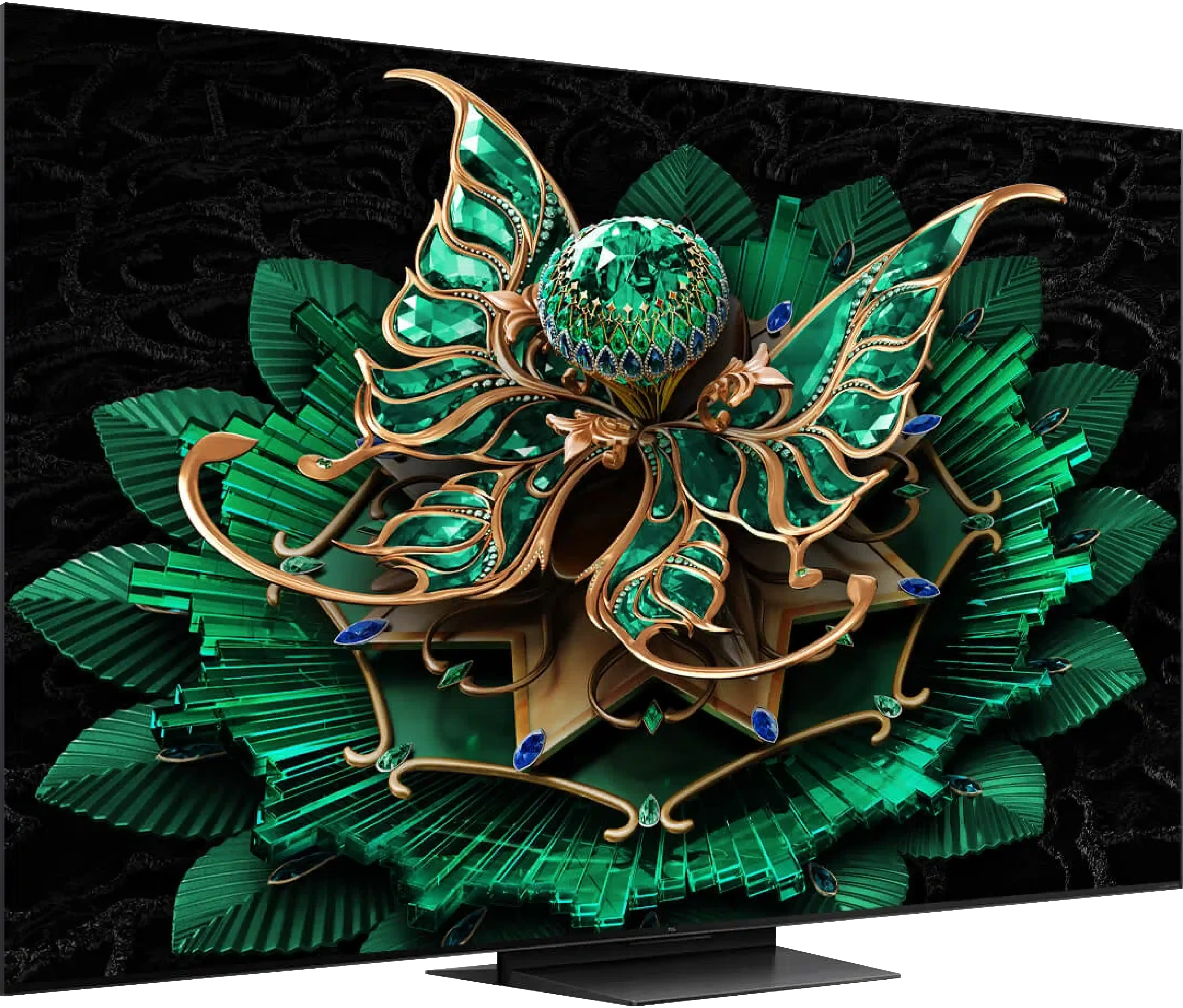
Panel type: LCD VA
Resolution: 3840x2160
System: VIDAA
Model year: 2023
Complete the survey to find out the result

Panel type: LCD VA
Resolution: 3840x2160
System: Google TV
Model year: 2025
Complete the survey to find out the result

Overall rating
7.5
7.1
Movies and series in UHD quality
7.5
6.7
Classic TV, YouTube
7.3
6.5
Sports broadcasts (TV and apps)
6.6
6.4
Gaming on console
8.2
8.5
TV as a computer monitor
8.0
8.4
Watching in bright light
7.8
6.1
Utility functions
8.1
7.7
Apps
7.7
9.6
Sound quality
6.9
7.0
Complete the survey to find out what fits your preferences
Advantages
Very good black
High brightness of the panel
Stable and fast-operating system
Very good price-to-quality ratio in the 100" variant
Very good black - VA panel with a large number of Mini-LED zones
High brightness in HDR - over 1000 nits
Great for gamers - HDMI 2.1, low input lag, VRR, ALLM etc.
Good motion fluidity - 144Hz panel
Support for multiple HDR formats: HDR10, HDR10+, Dolby Vision
Google TV operating system with access to a huge app base
Pleasant sound from built-in speakers
Disadvantages
No music apps (Spotify, Tidal)
Poor HDR performance in dark scenes with small light sources
Average viewing angles
Google TV can have minor stutters
No USB recording and PiP function
Our verdict
There are TVs that come for testing, and you immediately think: "oh, just another average one, probably like many others." And essentially... that's true. The TCL C7K doesn't try to dethrone OLEDs, nor does it scream "revolution!" from the box. And yet, after a few days of testing, it's hard not to think: "wow, this is really good gear." And that's exactly what the C7K is. The biggest advantage of the C7K is the decent picture at a reasonable price – MiniLED and quantum dots do their job here. The colours are vibrant, the brightness is satisfactory, the contrast impresses, and with the right settings, you can truly enjoy viewing in the best quality. The second strong point is motion smoothness – both in sports and gaming. Support for HDMI 2.1, variable refresh rate, 144 Hz, and a whole heap of other features makes gaming on this TV a pure pleasure. On top of that, there's Google TV, which – despite some minor shortcomings – offers access to almost an endless library of apps. Voice control, quick access to YouTube, Netflix, AirPlay support – it has everything you need for daily use. Are there downsides? Of course. The Google TV system can have moments of "hesitation," and MiniLED – like any MiniLED – can stumble on very challenging movie scenes. But these are details. After all, the C7K is a mid-range model – and in this class, it performs remarkably well. So if you’re looking for a reasonably priced, modern TV with Google TV that looks good, works well, and sounds pretty decent without breaking the bank – the TCL C7K definitely deserves your attention.
TV appearance






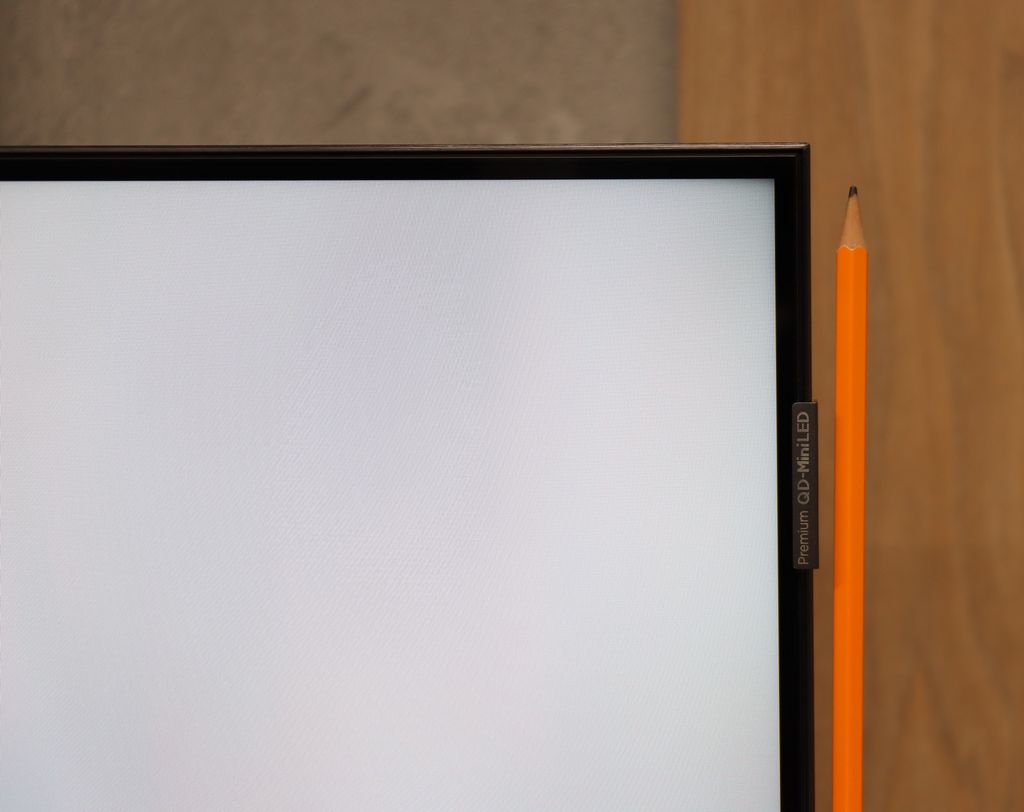
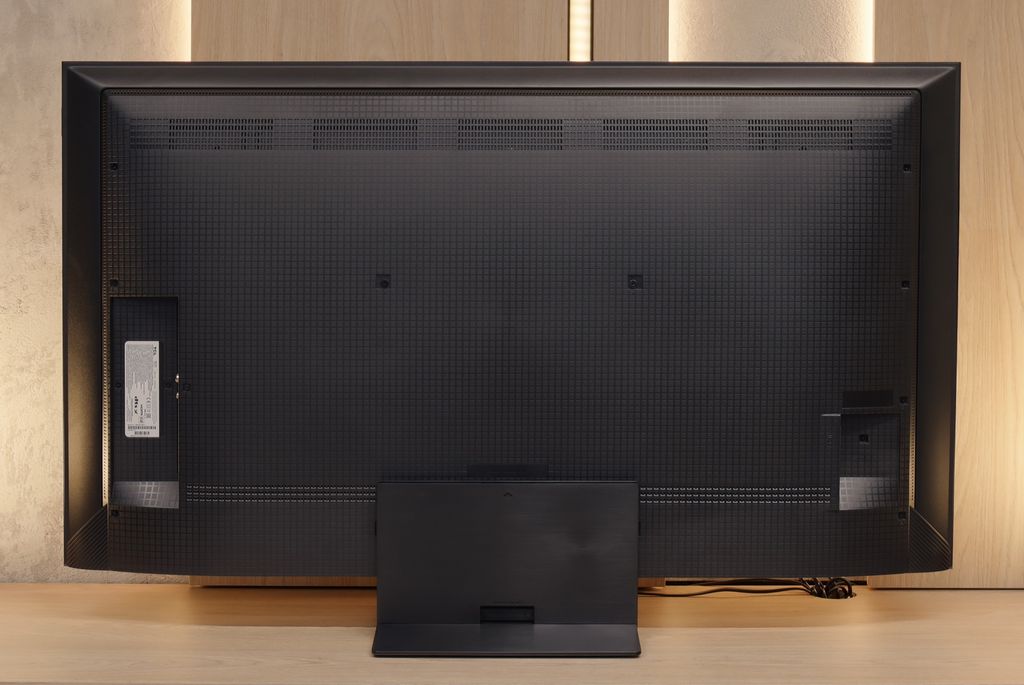
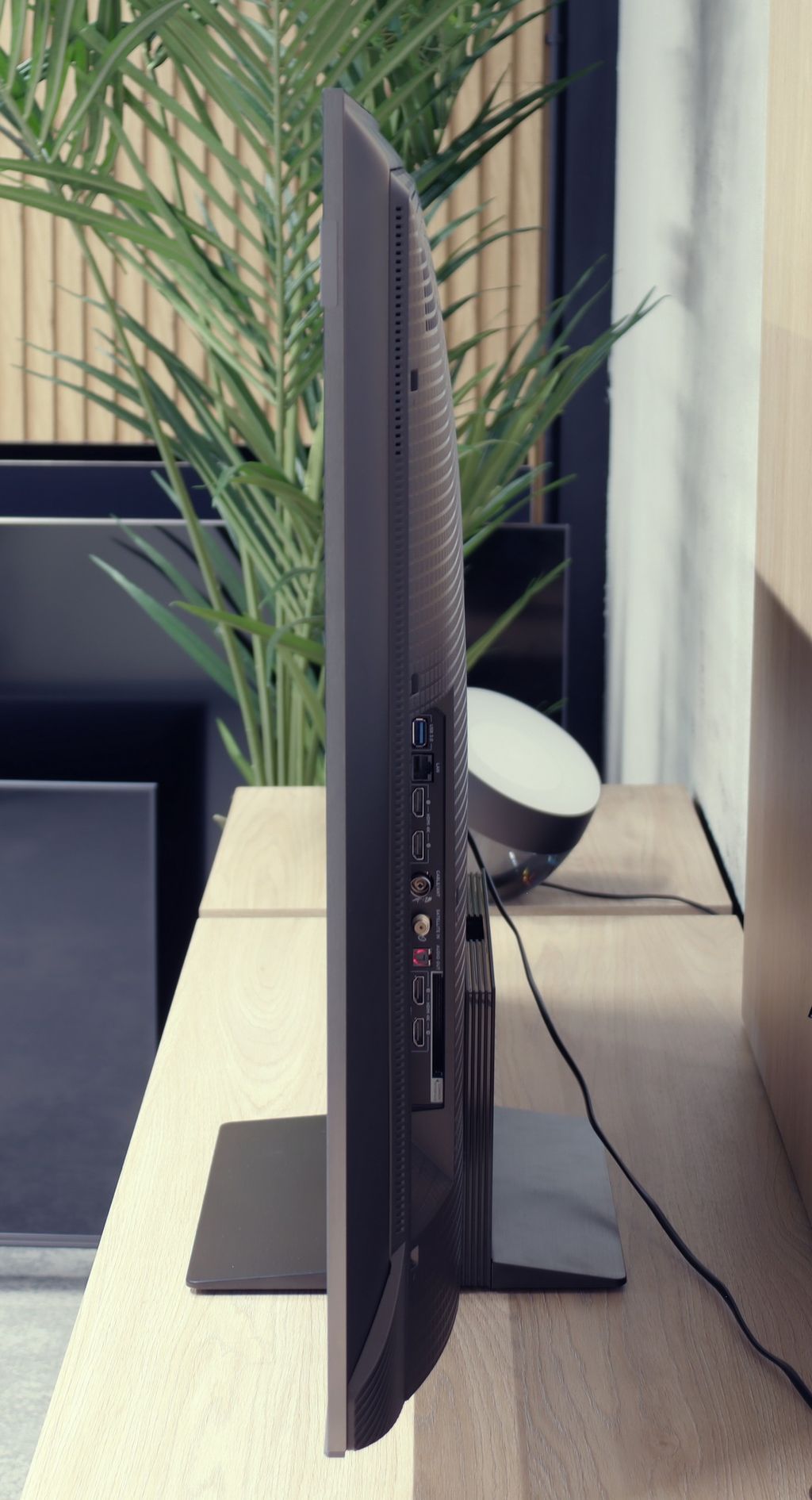
Contrast and black detail
8/10
7.1/10
Local dimming function: Yes, number of zones: 1620 (30 x 54)
Local dimming function: Yes, number of zones: 336 (14 x 24)
Contrast:

Result
124,650:1

Result
56,350:1

Result
24,550:1

Result
15,600:1

Result
12,600:1

Result
161,000:1

Result
18,750:1

Result
13,150:1

Result
6,300:1

Result
4,200:1
Halo effect and black detail visibility:

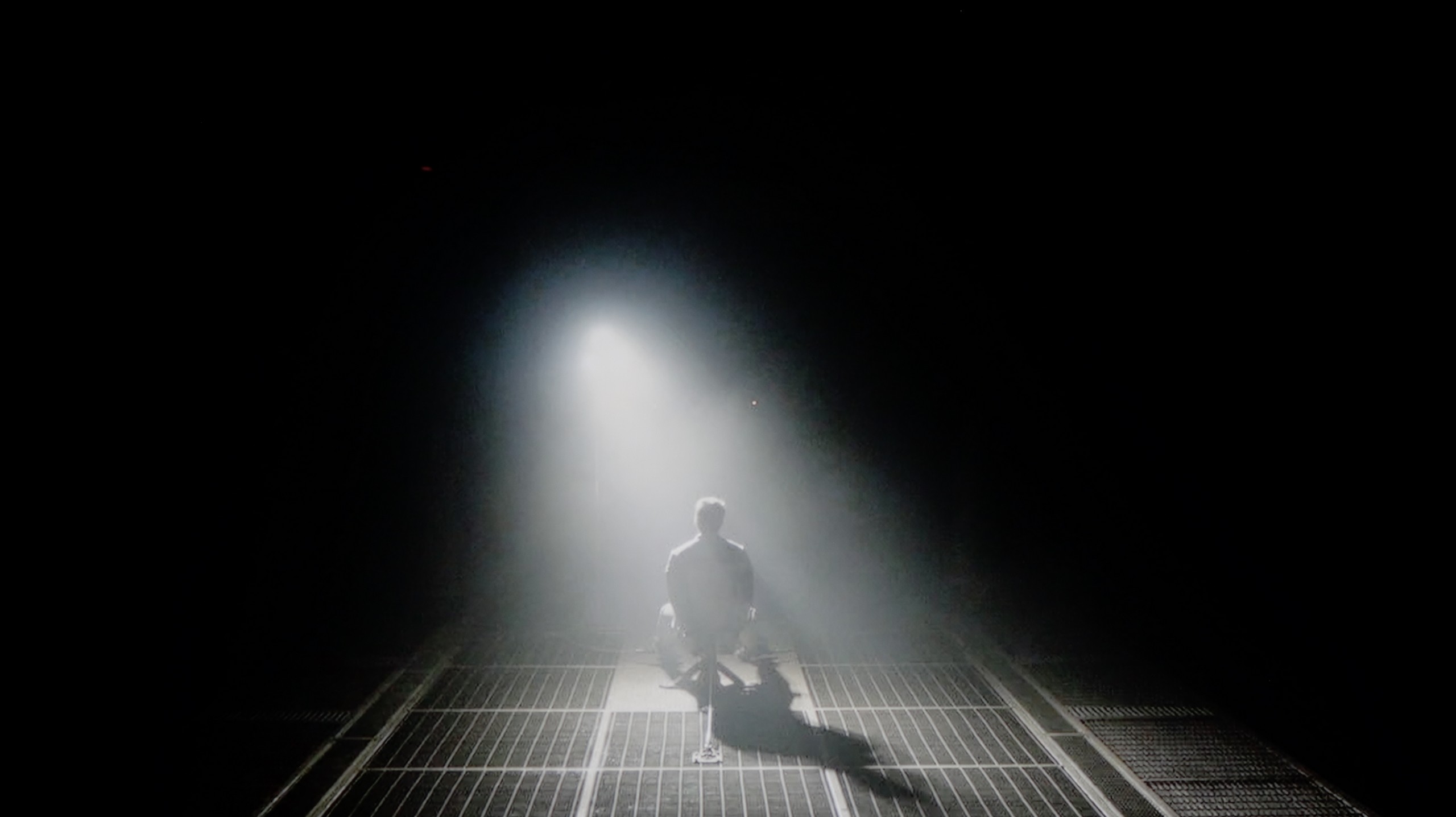

The television is equipped with a VA panel, which has high contrast even without the support of local dimming technology. With the additional support of Mini-LED technology, the television is able to offer really good blacks, both in subdued, dark scenes and in mixed scenes where black is interspersed with bright elements. Suffice it to say that even in the most challenging test sequences, it achieved a result above 10,000:1. In a fully darkened room, zone dimming can sometimes be visible, appearing as a slight halo effect around text or bright areas lightening up when a bright object moves quickly across the screen. However, this is a normal phenomenon that isn't bothersome. The television, like most LCD screens with local dimming, has a moderate tendency to darken the image, particularly small light sources in dark scenes.
The 50-inch TCL C7K we tested surprised us right from the start – it's the smallest model in the series, yet it's equipped with a VA panel with MiniLED backlighting and – get this – as many as 336 dimming zones. By comparison, many far larger TVs from higher tiers would be happy to boast such a number. Here we have it in a 50-inch version. Sounds promising, right? So how does this translate into real viewing experiences? In the overwhelming majority of tested scenes – very well. The contrast was high enough that in measurements it reached even six-figure values, which in practice means very deep blacks and well-separated highlights. In scenes from films like The Revenant or Oblivion, the effect was impressive, matching the best LCD screens in this class.
Not everything, however, went perfectly. Despite the impressive number of zones, managing them wasn't always exemplary. In more complex scenes, where small light sources or a high level of detail appear, the TV had issues with the so-called halo effect (a glowing aura around bright objects) or overly aggressive dimming of the image. In such situations, contrast could either collapse due to overexposure of some zones or, conversely – details in bright areas vanished because the zones were suppressing light too much. Nevertheless, it's worth emphasising that in the vast majority of scenes the contrast was more than satisfactory. And considering the size of the TV and the price, the final effect will satisfy not only average users.
HDR effect quality
6.3/10
5.4/10
Luminance measurements in HDR:

Result
985 nit

Result
343 nit

Result
737 nit

Result
298 nit

Result
1170 nit

Result
1051 nit

Result
185 nit

Result
454 nit

Result
200 nit

Result
836 nit
Scene from the movie “Pan” (about 2800 nits)

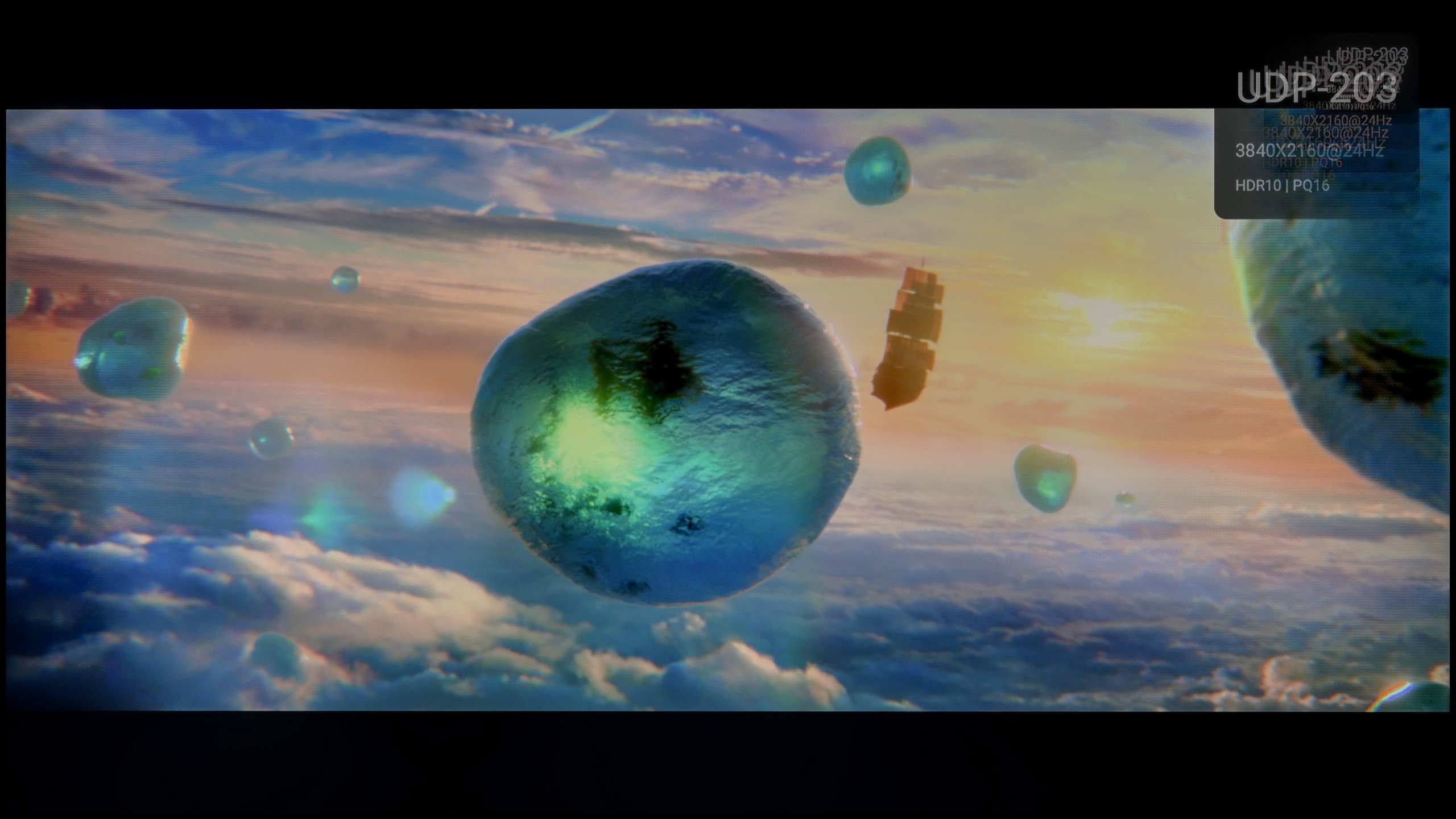
Scene from the movie “Billy Lynn” (about 1100 nits)


Static HDR10


Dynamic: Dolby Vision
Dynamic: Dolby Vision


HDR luminance chart:
TCL C7K / QM7K
Luminancja HDR
Luminance of RGB colors
Hisense U7KQ
Luminancja HDR
Luminance of RGB colors
Describing the HDR effect in the hundred-inch model Hisense U7KQ is not straightforward and requires a broader context. As can be seen, the results are highly variable, depending on the type of scene and the intensity of the bright effects that the television has to reproduce. In bright scenes, the device achieves over a thousand nits of brightness, translating to vivid and realistic images – these are exactly the effects we expect from equipment of this class. Unfortunately, the situation worsens in darker scenes. In mixed shots, such as those in the film "Gemini Man," the television still offers good brightness at around 700 nits, allowing for high-quality viewing. However, problems arise in very dark scenes where small light sources play a major role. The television does not fully utilise its capabilities here to avoid degrading the black levels in adjacent areas. As a result, there is no spectacular "WOW" effect, and such shots often do not give the impression of being realised in HDR technology.
TCL C7K is one of the brightest MiniLED TVs in its price class. Under optimal testing conditions, the screen can achieve over 1200 nits, resulting in impressive, at times dazzlingly bright scenes. And most importantly – this isn’t just a theory from measurements. In practice, even the brightest moments in movies can shine with true cinematic grandeur. Home HDR cinema fans should be really pleased.
The impression is fantastic, especially in scenes with large areas of brightness – a white sky, explosions, sun reflections, or magical sunsets can surprise with an intensity of light that rarely appears in this price range.
However, things get a bit worse when more challenging scenarios appear on the screen, previously described in terms of contrast – that is, images full of details, with small bright elements on a dark background. In such cases, the C7K often opts to preserve black at the expense of brightness. An example? Scenes from movies like Sicario 2 or Life of Pi, where small light sources (like a distant lantern) may become less visible, and details in the lights are simply dimmed or blend into the background.
For many viewers, this may be an acceptable compromise – as we achieve deep blacks and pleasant image depth. Nevertheless, it’s important to recognise that the visibility of small details in bright areas is not this model's strong suit. It’s simply a technological limitation that still exists – even with over 300 zones.
Factory color reproduction
5.5/10
6/10


Factory Mode
After calibration
The best factory mode we measured was “Filmmaker”. Despite this, its characteristics left a lot to be desired. Let’s take a look at the gamma chart, which is responsible for the depth and contrast of the image. First, we'll note the orange line running through the middle of the graph, starting at point 2.4. This is the reference value of the REC.709 standard. Now let’s look at the measured value, marked by a white, connected multi-point. Such a clear drop in gamma to a value of 2.0 meant a significant reduction in contrast, resulting in the image lacking appropriate depth, and the so-called “milk” effect was noticeable. The next thing we tested was the white balance. Though seemingly minor, if poorly adjusted, it can change the entire characteristic of the image. While the beginning of the chart looked quite promising, as we progressed further, the chart began to be dominated by two colours: red and blue. Due to the current state of affairs, all the materials we used for testing had an unpleasant tint in those colours. However, thanks to rich calibration tools, such as an advanced colour management system (CMS) and 2- and 20-point grey scale adjustments, we were able to significantly improve the display's performance in SDR materials, as confirmed by low deltaE errors and very well-modeled gamma and white balance.
A new feature in TCL televisions for 2025 is the long-awaited Filmmaker mode, which until now has been found in most competing brands. This is great news, as this mode is considered the most faithful to the original vision of the creators and is often recommended by enthusiasts of quality visuals. Unfortunately – as is often the case – the mere presence of it does not guarantee perfection. The Filmmaker mode in the TCL C7K is not without its faults. There are issues with inaccurate white balance, particularly a slight blue tint that resulted in cool, somewhat greyish skin tones. But that wasn’t the biggest problem. The main complaint was excessive brightness exposure, which is clearly visible on gamma and EOTF charts. The image was simply too bright, at times even blown out, which affected not only the texture of scenes but also the overall viewing experience. Some details were just lost, and the entire image looked as if someone had overdone the brightness slider. As always, we decided to see what could be squeezed out of it after calibration. And this is where things started to get really interesting…
Color reproduction after calibration
7.8/10
7.5/10




In SDR mode, after calibration, the Hisense 100U7KQ television performs excellently. There is nothing to fault in terms of colour reproduction - both pastel and deeply saturated hues are displayed according to the Rec. 709 standard. This ensures that the image looks natural and in line with the director's vision. As a result, viewers can enjoy an authentic visual experience, with colours and tonal subtleties faithfully represented.
In HDR mode, however, there is a noticeable boost in bright tones. The television tries to enhance the image, which can lead to artificial brightening. This phenomenon becomes even more apparent in real scenes, where bright parts of the image can be excessively amplified. Although colours in HDR are generally good, they are intentionally boosted too much by the manufacturer, which may affect their naturalness.
This manufacturer's approach to displaying images in HDR mode may not be to everyone's taste, especially those who value authenticity and fidelity to original colours. However, for those who prefer more dynamic and vivid images, this bright tone enhancement can be an appealing solution, adding extra sparkle and impact to scenes.
After calibration, the TCL C7K showed itself in a really good light, especially when it comes to SDR content. We managed to precisely tune the white balance, colour gamut, and brightness characteristics so that the colour errors on the ColorChecker palette fell below a value of 2. For the uninitiated – this is nearly a perfect result, which means that the image is very close to what the creators intended. Unfortunately, it was a different story with 4K HDR content. While we were able to slightly calm down the white balance and correct its earlier errors, it was still evident that the TV has some "MiniLED traits", particularly in brightness management. When we checked how the C7K handled the EOTF curve on real film scenes, rather than just on synthetic test patterns, it turned out that the screen still had a tendency to slightly brighten the entire image. This affects the overall experience – the black loses some depth, and the image becomes less contrasty than it should be. Despite these minor issues with HDR content, the overall reception of materials – especially in SDR – is really very good. After calibration, the C7K can display an image that can successfully compete with much more expensive models. Good colour tuning, natural skin tones, and pleasant brightness make movie watching and everyday content viewing more than satisfactory.
Smoothness of tonal transitions
10/10
8.6/10












Tonal transitions on the tested television can be described in one word: perfect. Throughout the testing sequence, where we played back very dark gradients from the most challenging scenes we know, there was not a hint of discontinuity or layers distinguishing themselves from each other. These impressive results testify to the high quality of the panel and advanced image processing algorithms. Of course, the ideal experience is maintained as long as we watch the television straight on – at an angle, dark shades can become quite pronounced, which is discussed in detail in the dedicated paragraph. It’s also worth noting that such a problem can be observed with lower quality materials, but this is not the television’s fault; rather, it's the lower quality of the source itself.
The TCL C7K performs very well with colour gradation – in most of the scenes tested, tonal transitions were smooth, and colours blended together without visible outlines or the artificial effect of "blotches". In everyday use, it's hard to find any faults – the picture looks natural, without jarring transitions or digital artifacts. Certain limitations only appear in very dark tones – especially in a heavily muted grey palette, where the television may struggle to reproduce the ideal gradation. But that’s absolutely understandable, as even many significantly more expensive models in this range simply can't cope. Fortunately, these situations are rare and don’t really affect the overall perception.
Image scaling and smoothness of tonal transitions
6/10
5.5/10
Smooth transition function


Image without overscan on the SD signal


Despite the television being equipped with a function to reduce posterisation called "Smooth Gradation", we did not notice a significant effect of its operation. Materials subjected to heavy compression, such as YouTube videos, still showed choppy, abrupt tonal transitions, which did not look particularly appealing. While this is due to the material itself and not the television, it would be good if there was a function to mask these issues, similar to those found in competing brands.
Image scaling, which is crucial when playing lower resolution content, we rate as average. Details are not overly blurry, and the image is not "smudged", however, there is noticeable jaggedness on the edges of objects, such as branches, and a halo effect around characters and text. While the television performs quite well, there is still room for improvement, especially in the context of displaying lower quality materials.
TCL C7K has a feature that, according to the manufacturer, is meant to smooth out undesirable colour transitions – something like a rescue for less successful tonal shifts. It's called "Gradual Smoothing," and... well, it sounds ambitious, but in practice, it works very poorly. Regardless of whether we set it to low or high, the difference is minimal. Worse still – the feature can cut out elements from the image that should remain. Fortunately, film grain remains untouched, so at least it doesn't smooth everything indiscriminately, but even so – it's better to simply turn this option off.
When it comes to upscaling lower resolution content, it's already better. SD and HD materials look quite decent, although at times we had the impression that the image loses sharpness and becomes too soft – as if something took away its clarity. Fortunately, with very low sources (e.g., 576p), there was no overscan effect, meaning the image wasn't artificially cropped – everything fit on the screen as it should.
Blur and motion smoothness
7/10
7.5/10

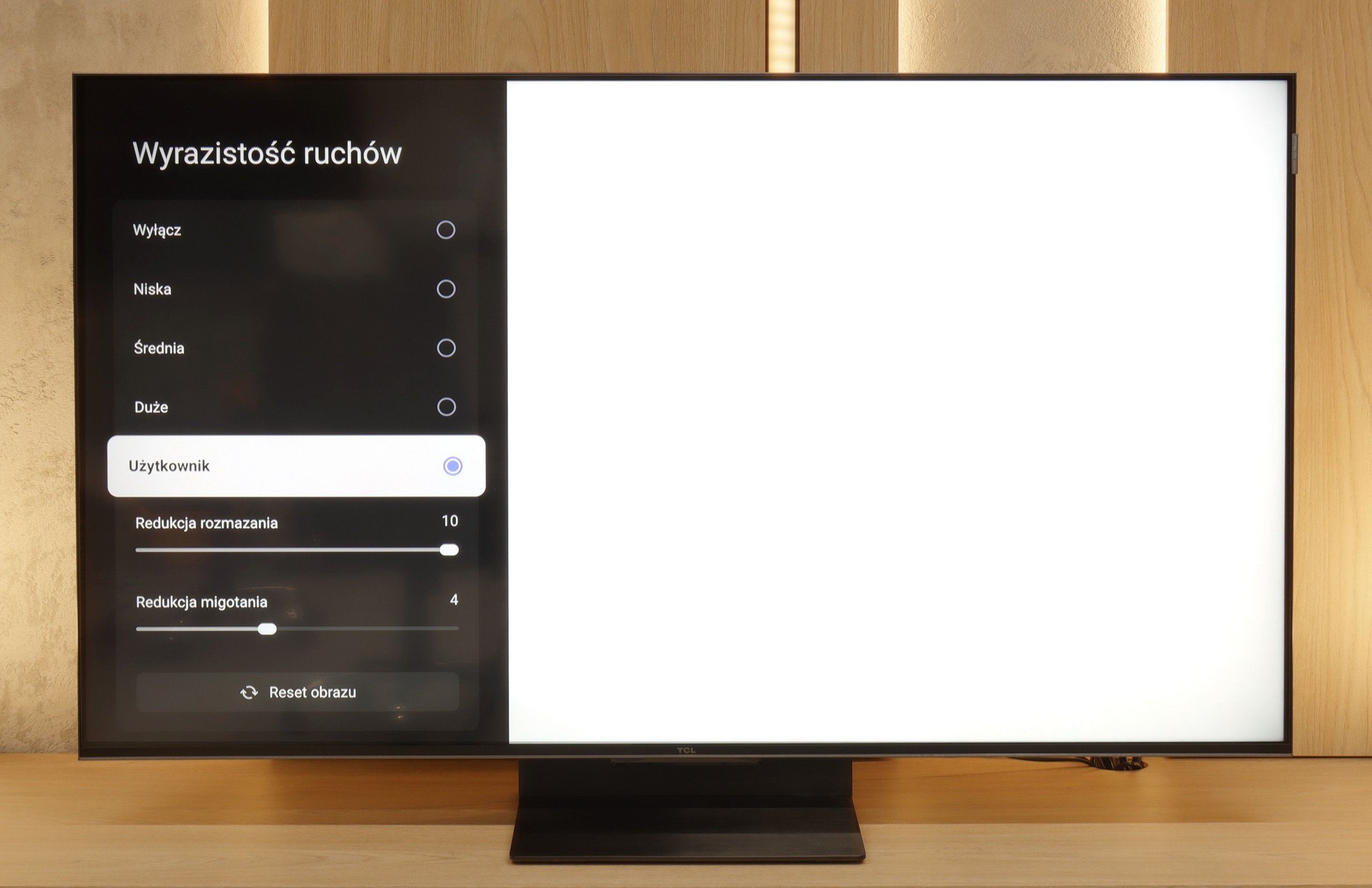
Blur (native resolution, maximum refresh rate):





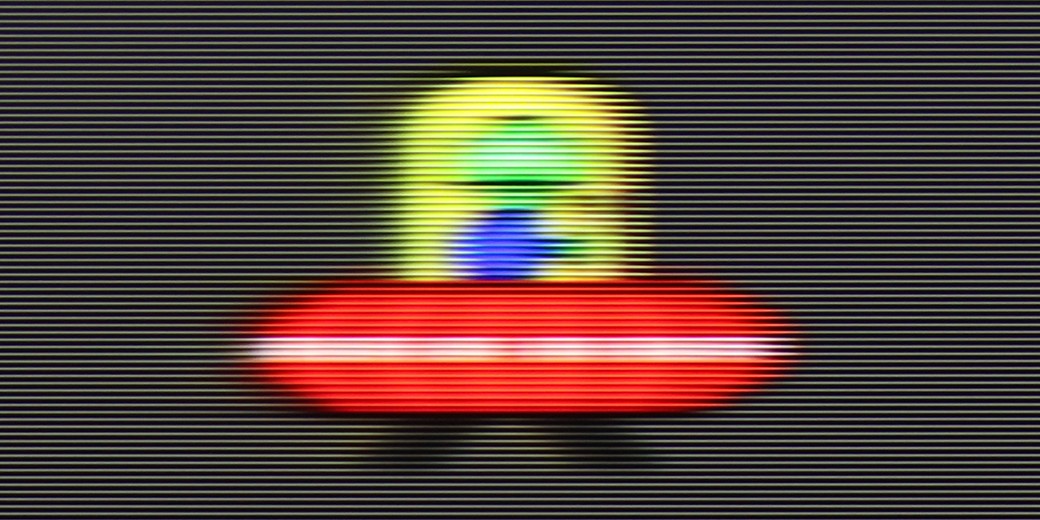
Blur (BFI function enabled):



Smużenie ():
Smużenie (4K 144Hz):



The TV correctly receives a 4K signal up to 144 Hz, allowing for very smooth images in high resolution. When limited to Full HD resolution, the TV can handle even 240 Hz, but such a signal can only be obtained from a PC. Unfortunately, the use of this feature is limited by several factors.
Firstly, Full HD resolution on a large TV screen may seem insufficient, affecting image quality. Furthermore, the response time of the panel in this model is not short enough to fully utilise the refresh rate of 240 Hz. As a result, at such a high refresh rate, there is significant overdrive, which causes noticeable smearing and so-called "ghosting" behind moving objects.
It is also worth noting the motion smoothing feature in the TV, which operates up to 120 Hz. This is particularly useful when watching sports and movies, where motion smoothness is crucial. The TV offers stable operation of this feature, minimising the amount of generated artefacts. Motion smoothness can be adjusted using two sliders – one for smoothness in movies and the other for reducing smearing in sports content.
In summary, although the TV Hisense U7KQ offers impressive capabilities in image refresh rates, limitations related to the response time of the panel and appropriate resolution may affect the actual benefits of these features. Nevertheless, the motion smoothing function works very well, enhancing the experience of watching dynamic content.
TCL C7K handles motion fluidity really well. The panel it uses offers a refresh rate of 144 Hz, which suggests that this TV is more than just a standard "60 Hz" panel. Furthermore, if we connect the C7K to a computer and set the resolution to Full HD. But we will write more about this in the paragraph on gamers and PC compatibility. Returning to everyday use – both sports and movies look very good here. Thanks to the fast panel and the well-functioning motion smoother, the C7K is great for watching matches, but also for movie screenings. In the menu, we find two sliders – motion blur reduction and flicker reduction – that allow you to adjust the fluidity effect to your own preferences. At lower settings, we get a more cinematic effect, with slight judder. At higher settings – the image becomes more theatrical, fluid to the point of excess. Whatever your preference – everyone can set it their own way.
Console compatibility and gaming features
8.5/10
9.8/10
- ALLM
- VRR
- VRR range48 - 144Hz48 - 144Hz
- Dolby Vision Game Mode
- Correct implementation of HGIG
- 1080p@120Hz
- 1440p@120Hz
- 4K@120Hz
- Game bar

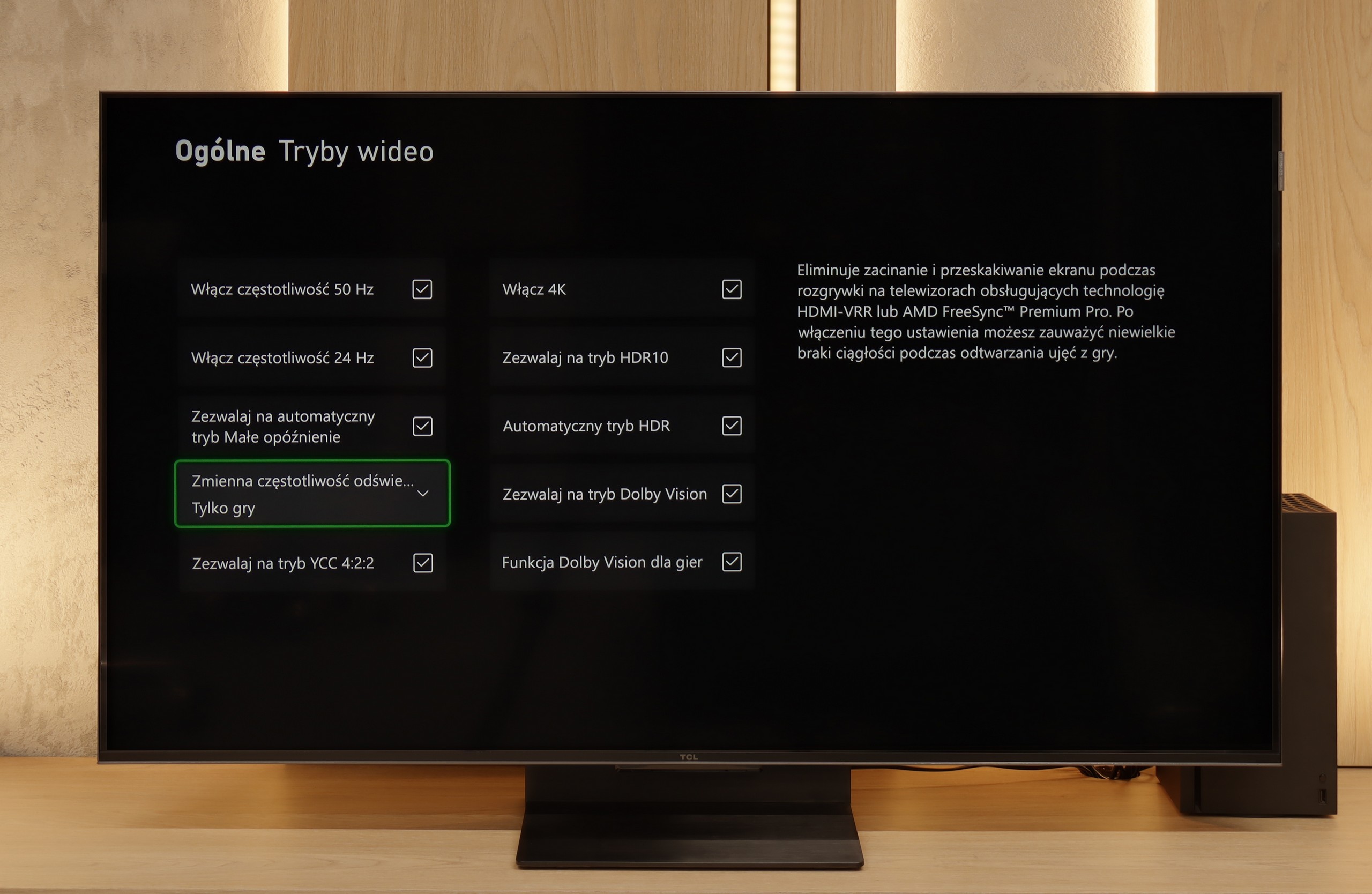

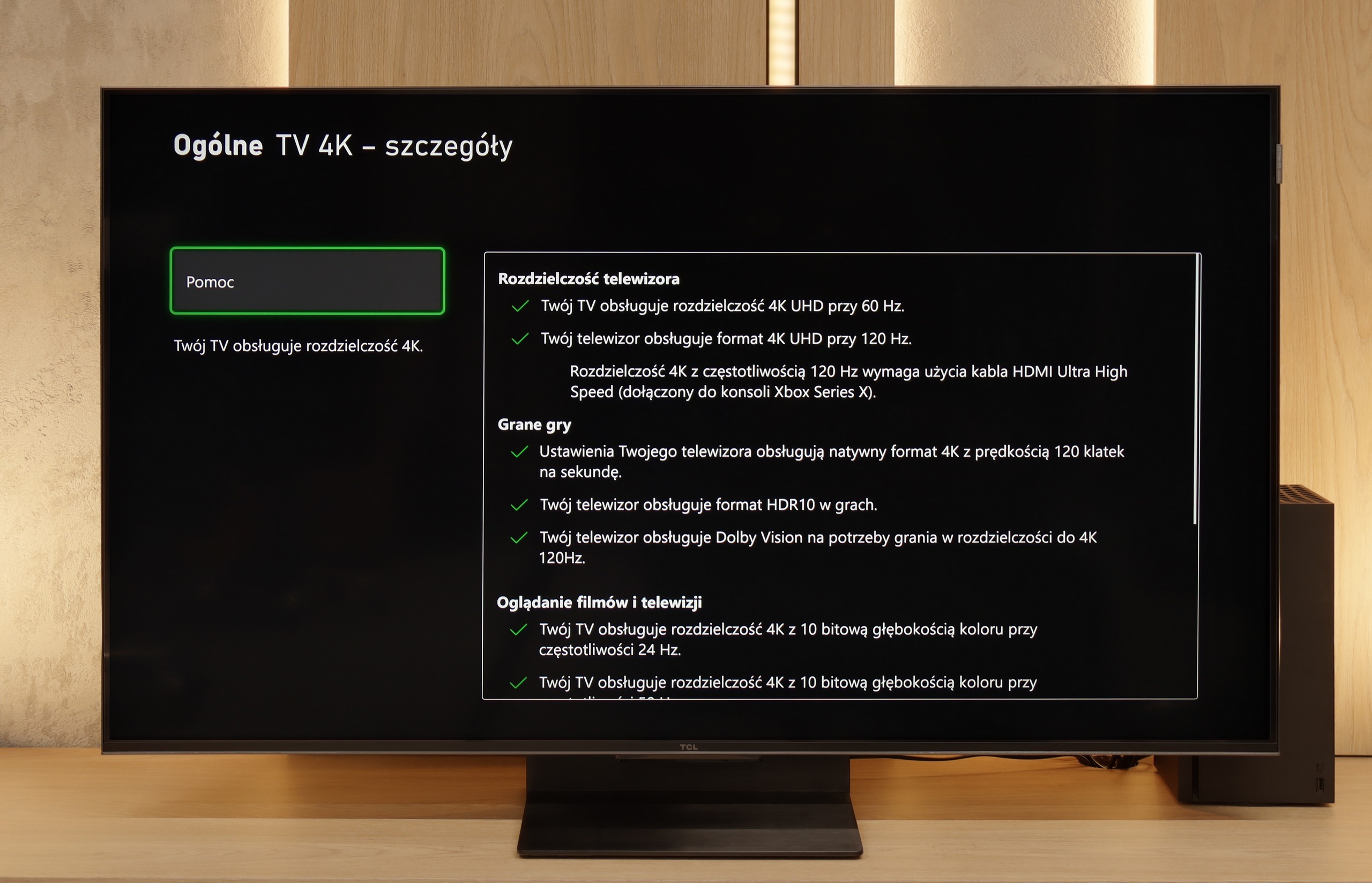

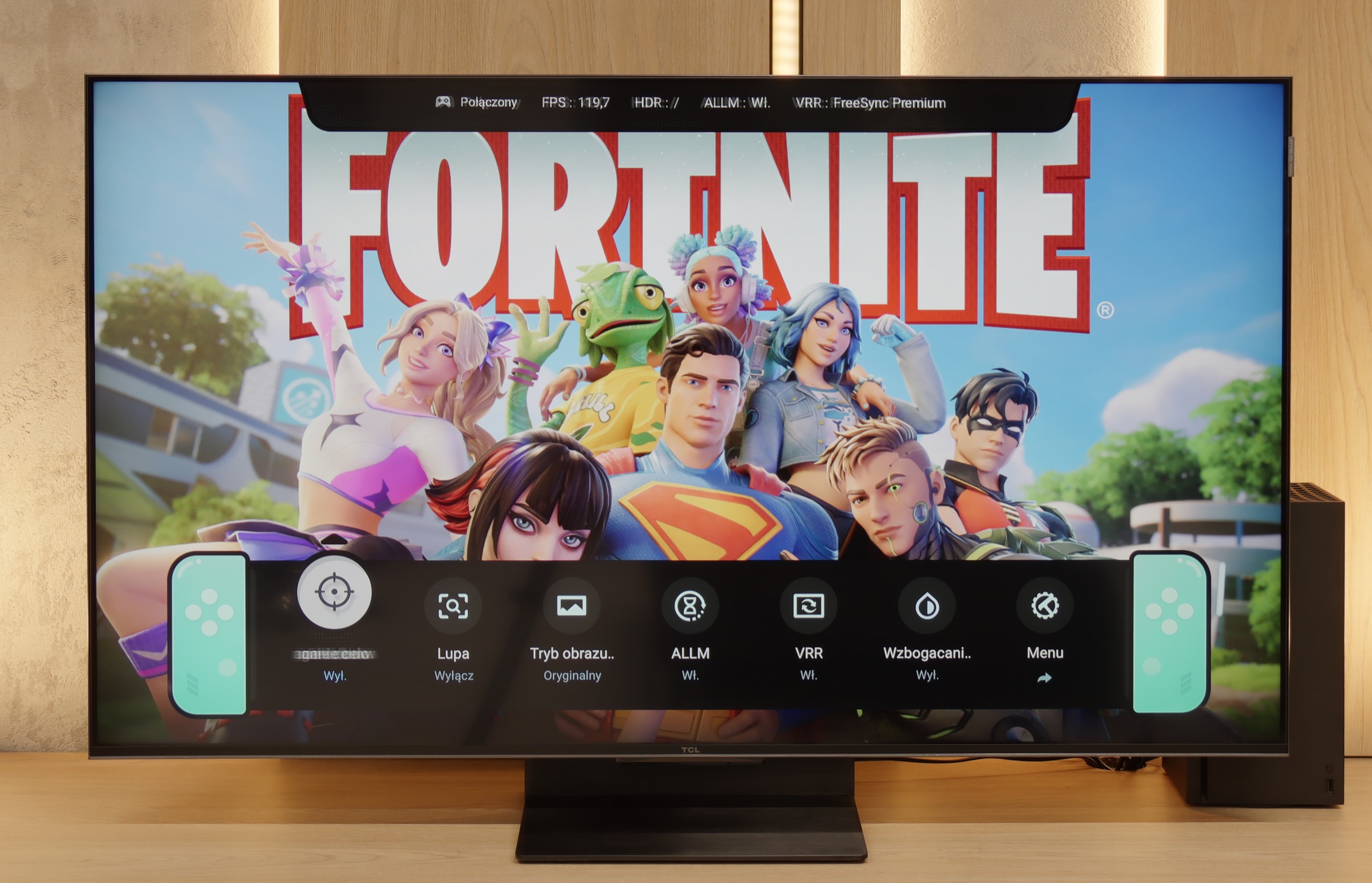

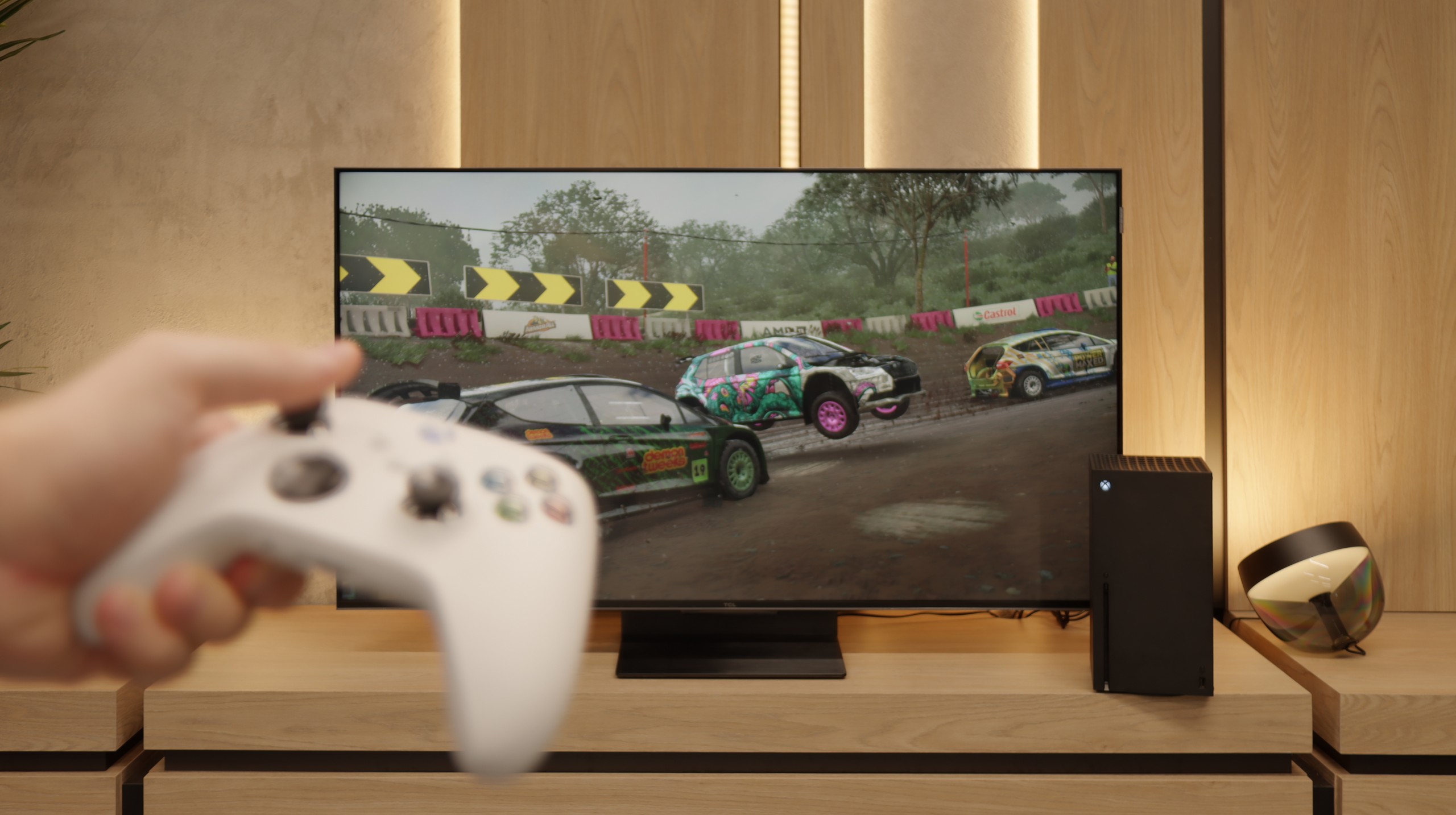
The Hisense U7KQ TV supports all the key features for gamers that users of Xbox or PlayStation consoles might expect. These features include support for high refresh rates, low input lag, and a game bar. Generally speaking, most of these features work well, providing a satisfying gaming experience.
However, the VRR (Variable Refresh Rate) technology does not function optimally. When VRR is activated, the TV disables local dimming, which significantly reduces image quality. In VRR mode, there is a lack of good contrast and high brightness in HDR mode, resulting in unsatisfactory image quality. In practice, this means that the VRR mode may be rarely used by gamers due to these limitations.
Additionally, the TV does not support the HGIG (HDR Gaming Interest Group) mode, which is designed to optimise HDR image quality in games. The absence of this mode leads to issues with double tone mapping—once in the TV and again in the console. As a result, the quality of HDR gaming is lower, which can affect the overall gaming experience.
In summary, while the Hisense U7KQ offers many features for gamers, certain key aspects, such as optimal VRR performance and support for HGIG, may not meet the expectations of more demanding users. Nevertheless, the TV still provides good support for most standard gaming features, making it a suitable choice for a wide range of gamers.
TCL C7K is a television that on paper looks like the perfect equipment for gamers – and most importantly, it performs well in practice too. Here's some good news: we have two full-bandwidth HDMI 2.1 ports, so we can easily connect both a console and a computer, using all their capabilities. The panel itself supports a refresh rate of 144 Hz, which provides a significant advantage in dynamic games. Additionally, it comes with a full set of gaming features: VRR (variable refresh rate), ALLM (automatic low latency mode), and support for Dolby Vision in games. There's also an HGiG mode that allows for HDR effects that align with the creators' intentions. GameBar, which is an information bar for gamers. It operates quickly, looks clear (like a Nintendo console👌), and shows what's most important: the current frame rate, VRR status, and even HDR parameters.
Input lag
9.8/10
9.7/10
SDR
HDR
Dolby Vision
The Hisense U7KQ TV features very low input lag across all picture modes, which is crucial for gamers who require quick screen response. Regardless of the signal type – whether it's 4K, Full HD, 60 Hz, or 120 Hz – the lag remains below 20 ms. This result is excellent and ensures that even the most demanding gamers will not experience any delays while playing. As a result, this TV deserves the highest rating for gaming performance.
When it comes to delays, the C7K gives no reasons to complain. In games at 120 Hz, the input lag is around 10 ms, which means that the TV responds really quickly. Interestingly, even in Dolby Vision mode, the result is very similar, which isn't always the case. Good job, TCL. At 60 Hz, the lag does increase a bit, but that's completely normal and applies to pretty much every TV with a refresh rate of 120Hz and above. The most important thing is that everything still runs smoothly and there's no feeling that something isn't responding to our actions.
Compatibility with PC
8/10
8.4/10

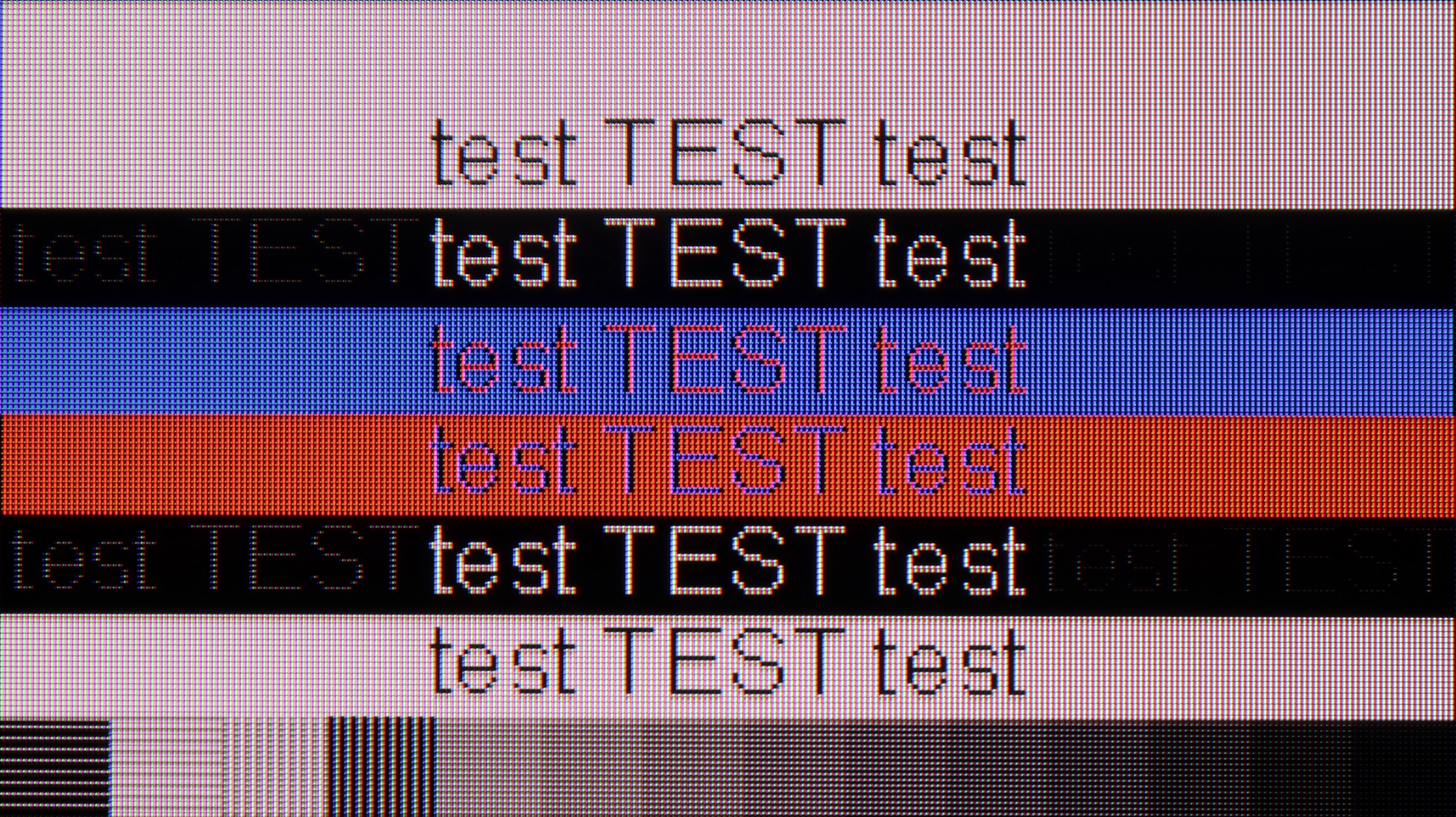
The Hisense U7KQ television works excellently with a PC, thanks to several key features. First and foremost, it supports chroma 4:4:4, which is essential for displaying text and graphics in the highest quality without losing details. This ensures that images and texts are clear and sharp, which is particularly important for users who use the television as a monitor for work or gaming.
Additionally, the Hisense U7KQ features very low input lag in PC mode, meaning minimal delays between actions taken on the computer and the displayed image. This is crucial for gamers who need quick screen response to gain an edge in dynamic games. The low input lag ensures that every action is immediately reflected on the screen, enhancing the overall user experience.
Despite using a BGR pixel arrangement instead of the more traditional RGB layout, the readability of fonts on the screen is at a good level. BGR (Blue-Green-Red) is a configuration where the subpixels are arranged in a different order than in standard RGB. This can sometimes affect text quality, depending on the operating system settings.
In summary, the Hisense U7KQ is a good choice for PC users, offering support for chroma 4:4:4, low input lag, and good text readability, making it a versatile device for both work and entertainment.
If we plan to connect the C7K to a computer – especially for gaming – there's definitely a lot to play with. We have 4K at 144 Hz, which already sounds great, but if we drop the resolution, the TV can even display 280 Hz. In e-sports, where every split second counts, this really makes a difference. On top of that, it supports G-Sync and FreeSync, so no matter what graphics card we have – the image will be smooth, with no stuttering or tearing.
But if we plan to put the C7K on a desk and use it like a monitor, it's a bit less "rosy." Sure, it supports chroma 4:4:4, so fonts should be sharp, but with very dark letters, you can notice slight blurriness and edge dimming. It's not something that immediately stands out during gaming or watching, but when working with text – it can be distracting. In everyday use – relatively worry-free, but if we plan to have a 50-inch screen a metre from our face, it's worth keeping this in mind.
Viewing angles
4/10
3/10
The screen uses a VA panel, which unfortunately has its limitations in terms of viewing angles. Unlike some competing models, Hisense U7KQ does not have any coatings to improve this aspect, which means that image quality significantly decreases when viewed at an angle.
With even a slight deviation from the central axis, one can notice that the contrast of the image begins to deteriorate. Details in the dark areas of the image become overly pronounced, and colour saturation diminishes. These effects are typical of VA panels, and in practice, this means that the best viewing experience can only be obtained when sitting directly in front of the screen.
For users who plan to watch the television from different spots in the room, this can be a significant limitation. Reduced image quality at an angle may affect overall satisfaction with the product, especially when watching movies or shows with a larger group.
There's no surprise here – the C7K has classic viewing angles for a VA panel. That is: we sit directly in front – it's excellent. Colours look good, contrast is strong, everything is in place. But just shifting slightly to the side starts to make things worse – the image loses saturation, the blacks turn grey, and the overall impression diminishes a bit. So if we plan to watch together with a few people or have a sofa that takes up half the lounge – it’s worth seating everyone more centrally. You can watch from the side, but don’t expect miracles – it’s simply a characteristic of the VA panel.
TV efficiency during daytime
7.8/10
6.1/10




Matrix brightness
Average luminance SDR
TCL C7K / QM7K: 475 cd/m2
Hisense U7KQ: 966 cd/m2
Hisense U7KQ does not have the best reflection handling properties, as its panel is equipped with a satin finish, which is not as effective in reducing glare as the matte finishes used in some other TVs, nor does it maintain as deep a black as glossy panels. It is somewhere in between these two effects. Light reflections may be visible, especially in brightly lit rooms, which can affect viewing comfort.
However, the high peak brightness values that this model achieves effectively compensate for these limitations. Thanks to this brightness, the image remains clearly visible even in sunny rooms. This means the TV performs quite well in challenging lighting conditions where other models may struggle to provide adequate picture quality.
Luckily, the TCL C7K performs quite well in bright rooms. The applied panel has a satin finish that effectively reduces reflections, so even on sunny days we don't have to worry about reflections from lamps or windows. Importantly, the colours maintain their intensity and don't wash out, as can happen with weaker matte panels. As for brightness, the average for content like YouTube or regular television reaches just below 500 nits. It's not a record result – for example, the MQLED85 (C765) performs better in this regard. However, for everyday viewing during the day, it should work without major issues, as long as we don't plan to place it opposite a south-facing window without curtains.
Details about the matrix
Subpixel Structure:

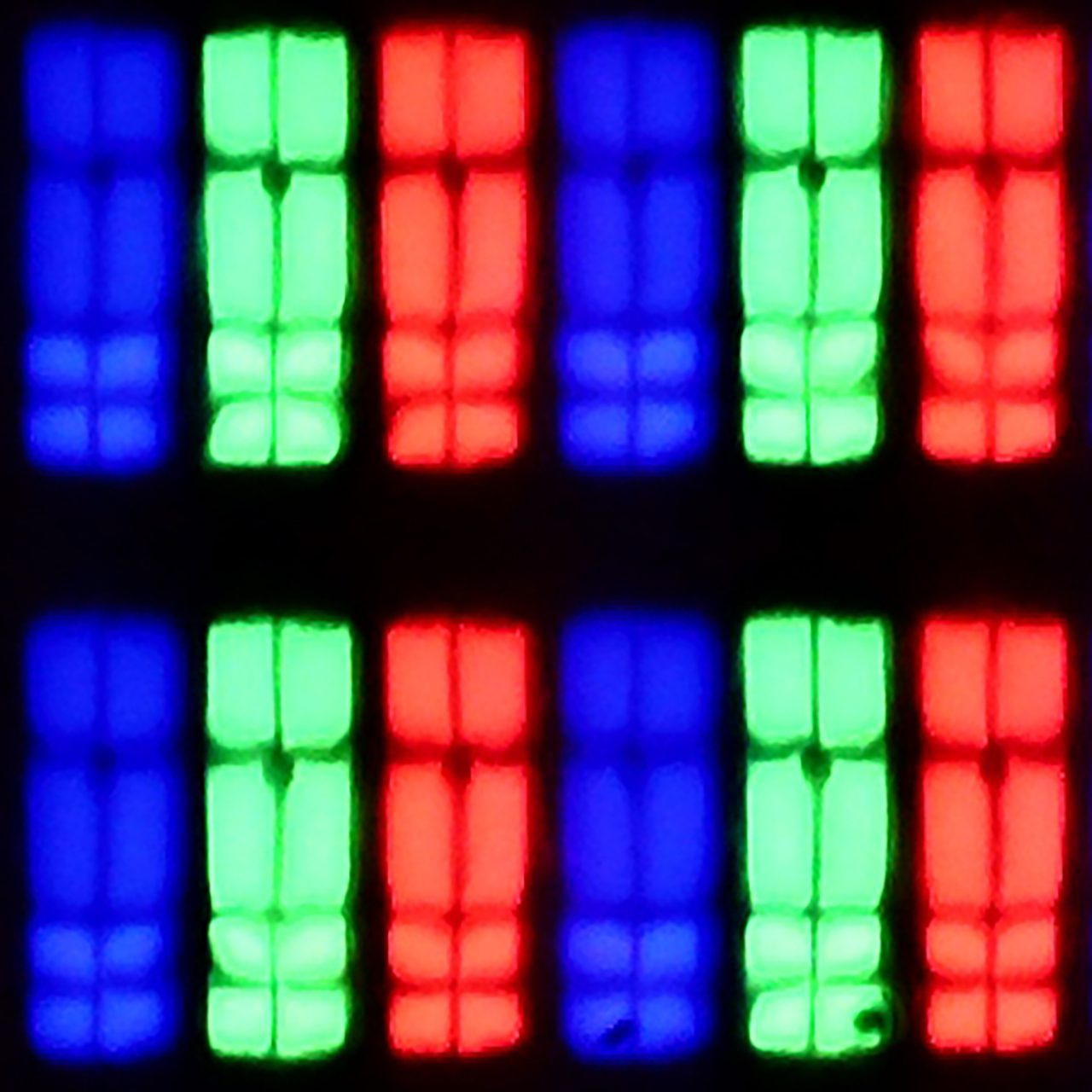
Panel uniformity:
Hisense U7KQ
TCL C7K / QM7K
TV features
8.1/10
7.7/10
- HDMI inputs2 x HDMI 2.0, 2 x HDMI 2.1 48Gbps2 x HDMI 2.0, 2 x HDMI 2.1 48Gbps
- Other inputsRCA (Chinch)
- OutputsToslink (Optical audio), eARC (HDMI), ARC (HDMI), Mini-Jack (Headphones)Toslink (Optical audio), eARC (HDMI), ARC (HDMI)
- Network InterfacesWi-Fi 2.4GHz, Ethernet (LAN) 100MbpsWi-Fi 2.4GHz, Wi-Fi 5GHz, Ethernet (LAN) 100Mbps
- TV receptionDVB-T, DVB-T2, DVB-S, DVB-S2, DVB-CDVB-T, DVB-T2, DVB-S, DVB-S2, DVB-C
Classic features:
- Recording to USB (terrestrial TV)
- Recording programming
- Picture in Picture (PiP)
- RF remote control (no need to aim at the screen)
- Backlit remote control
- Teletext
- Audio only mode
- Possibility to connect Bluetooth headphones to the TV
- Possibility to simultaneously use Bluetooth headphones and the TV speaker
Smart features:
- AirPlay
- Screen mirroring (Windows Miracast)
- Wyszukiwanie głosowe
- Voice search in native language
- Ability to connect a keyboard and mouse


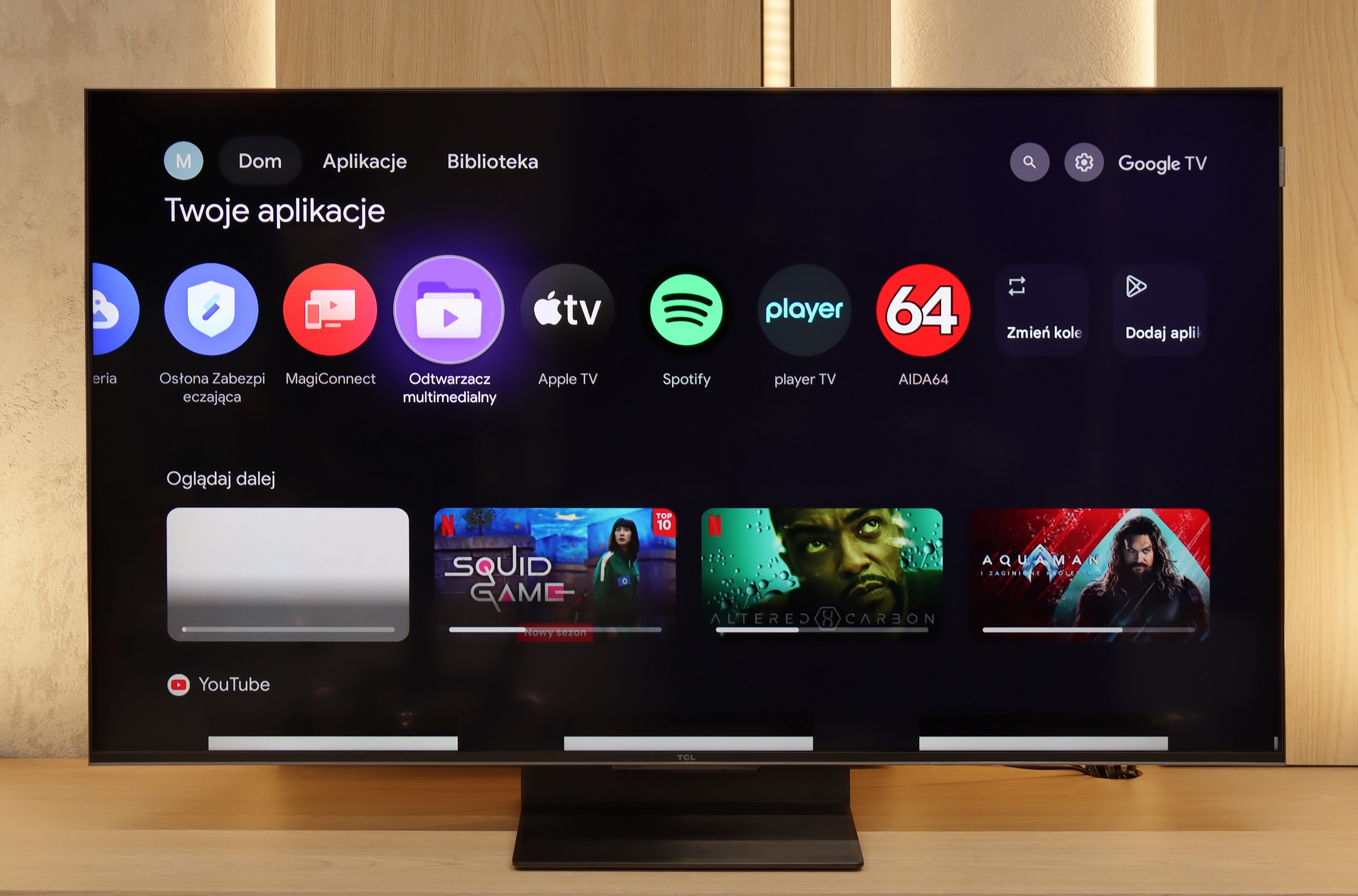
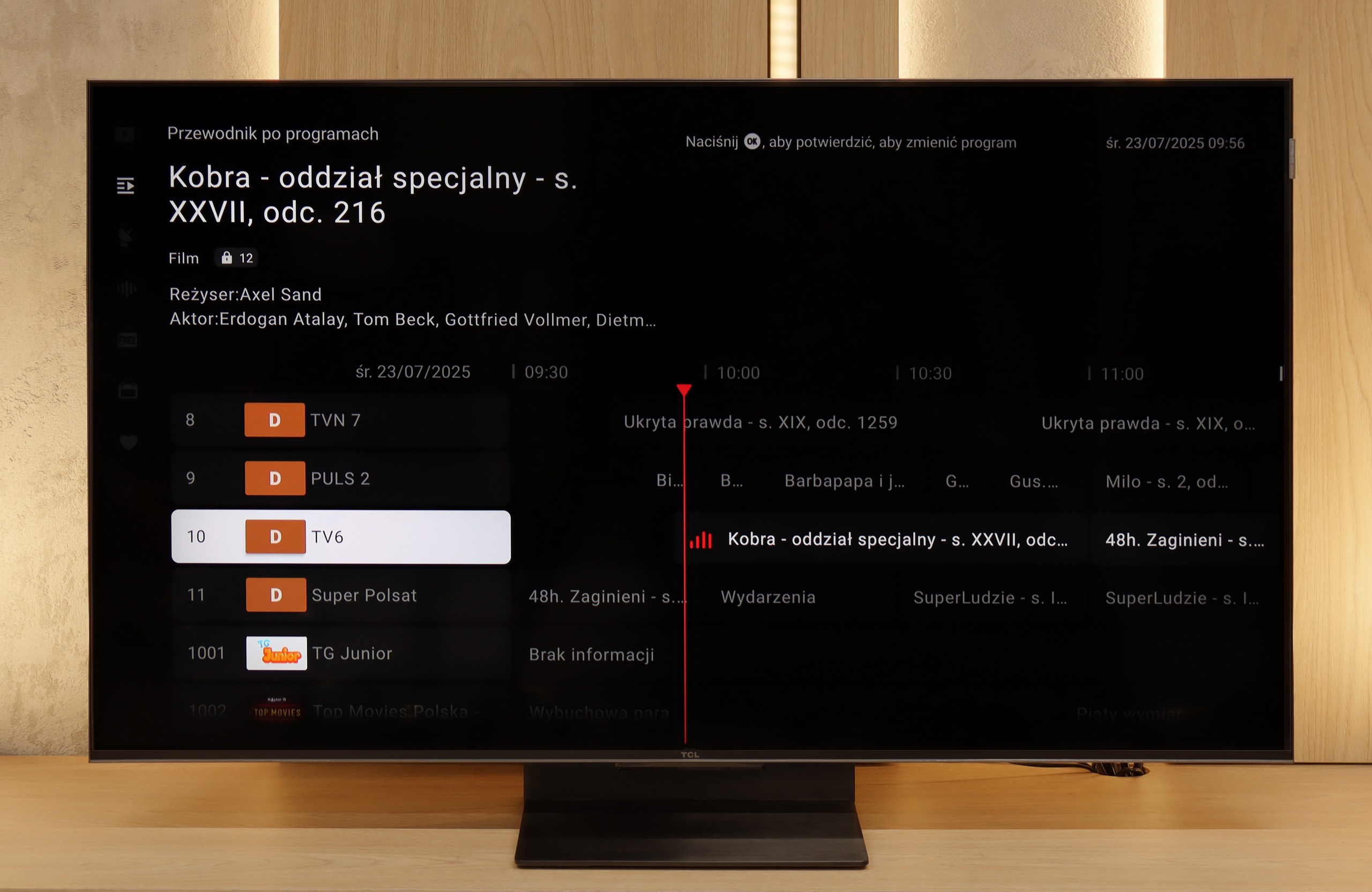
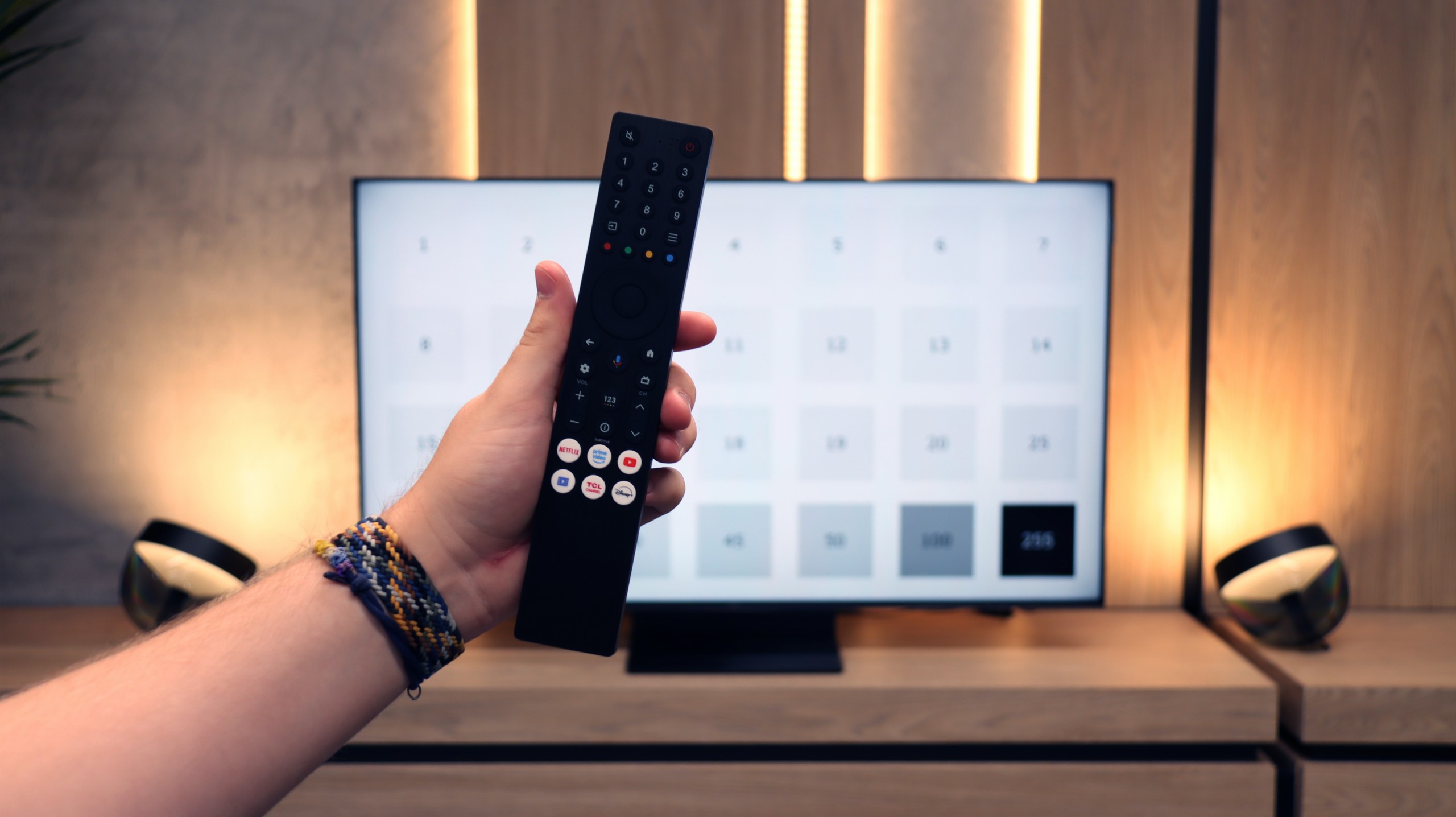
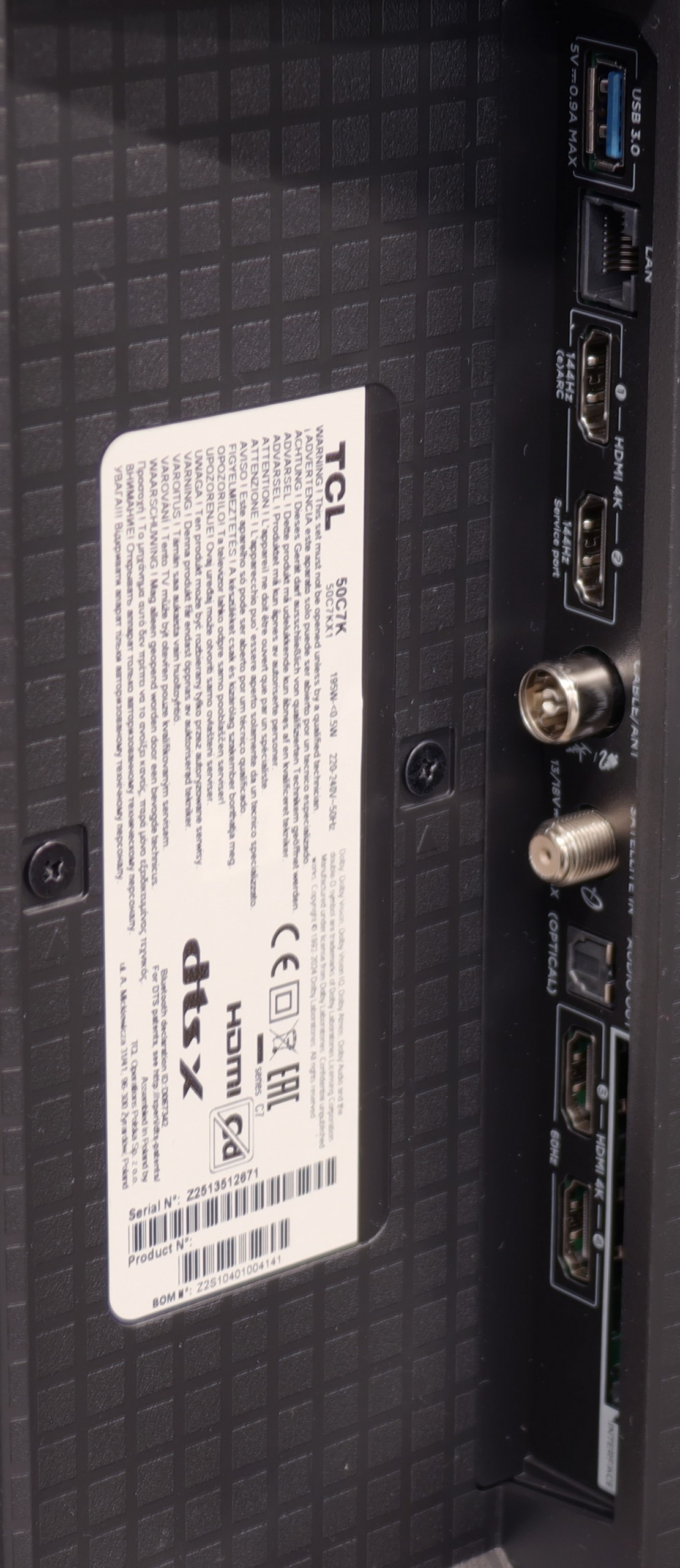
Hisense uses the VIDAA operating system, which is a proprietary solution from this brand. Although it doesn't offer as much expansion and as many apps as the popular Android TV, it has its advantages. The VIDAA system runs quickly and stably, meaning that users don’t have to worry about freezes or long loading times for apps.
However, VIDAA does have some limitations. There are quite a few apps available, but unfortunately, it lacks music apps like Spotify or Tidal. Nevertheless, VIDAA supports most standard features that might be needed, such as screen mirroring, voice search in Polish, the ability to connect a keyboard and mouse, and Bluetooth headphones.
The television also supports many other features that are important to users, such as the ability to record programs to USB and schedule recordings. However, it lacks some specific functions like teletext or the "Audio Only" mode, which allows listening to audio with the screen off.
In summary, while the VIDAA system is lesser-known and has certain limitations compared to Android TV, it offers stable and fast performance and supports most features that users might need. It is a solid solution for those looking for a simple and effective operating system in a television.
SmartTV: GoogleTV
The biggest strength of the TCL C7K in everyday use is undoubtedly the Google TV system. It is thanks to this that we have access to an almost endless library of applications, including some more niche ones that are often unavailable on other platforms. The built-in Google Assistant understands Polish, so we can easily ask what is on TV, what the weather is like, and even give a few voice commands to control the television. The presence of Chromecast and AirPlay, which work smoothly and make life easier, is also a plus.
Usability Features
However, the traditional functions are a bit lacking. Of course, we have the basics – teletext, EPG, or the ability to connect headphones – but that’s pretty much where it ends. There's a lack of USB recording features or picture-in-picture (PiP) mode, which can still be found among competitors. It's also worth remembering that Google TV in the TCL version sometimes has strangely translated menu sections or minor interface errors. These aren’t issues that hinder daily use, but detail-oriented individuals may notice them.
Playing files from USB
8.1/10
9.2/10
Supported photo formats:
Maximum photo resolution:


The built-in media player on the Hisense U7KQ television handles most popular video formats well; however, there may occasionally be issues with loading subtitles, which can be frustrating for users who prefer watching films with text.
It is worth noting certain limitations regarding the support for less popular codecs, such as AV1 and H266. While these codecs are not yet widely used, their lack of support could pose a problem in the future when they become more common. Currently, however, most users will not feel their absence.
Strange behaviour has been observed when playing photos – some files in specific resolutions may not load correctly. This can be problematic for those wanting to browse their photographs directly from a USB stick. For this reason, viewing photos on this television may be limited, as some files may not load at all.
In summary, although the built-in media player on the Hisense U7KQ performs well with most standard video formats, users may encounter certain limitations related to loading subtitles and photos in specific resolutions. Issues with the support of less popular codecs are currently minimal but could become more significant in the future.
The built-in file player in the TCL C7K performs really well. It supports most popular audio and video formats, so if we want to quickly plug in something from a USB drive and get it going – there shouldn't be any problem. Of course, as is often the case, you can find some minor shortcomings – not every exotic codec will work (Apple's HEIC), not all subtitles will be perfectly synchronised (txt.). However, the biggest advantage of this television comes to the rescue, which is Google TV. With access to the Google Play Store, we can easily install an alternative player, such as VLC, and then no files will frighten us.
Apps
7.7/10
9.6/10














































Sound
6.9/10
7/10
- Subjective sound quality:6.9/107/10
- Dolby Digital Plus 7.1:
- Dolby True HD 7.1:
- Dolby Atmos in Dolby Digital Plus (JOC):
- Dolby Atmos in Dolby True HD:
- DTS:X in DTS-HD MA:
- DTS-HD Master Audio:
The Hisense U7KQ TV offers satisfactory sound quality, which is sufficient for most everyday uses. The sound system of this model features good volume and clarity, making dialogues and sound effects clear. However, the TV may not deliver the full audio experience that can be obtained from dedicated audio systems or soundbars. One of the main audio advantages of the U7KQ is its ability to reproduce sound with minimal distortion at higher volume levels reaching up to 83dB and support for Dolby Atmos and DTS.
To be honest, we didn't expect much from the sound of the 50-inch version of the C7K model. Usually, in such sizes, it's hard to find anything more than thin, flat sound. But here – a pleasant surprise. The sound turned out to be really enjoyable, with good clarity and even a subtly noticeable bass. This is probably linked to TCL's new collaboration with the Bang & Olufsen brand, which is a novelty for 2025. Whether the C7K actually contains original drivers from the Danish premium brand – we can't confirm that. But the end result still deserves a thumbs up. For a TV without a soundbar – it sounds quite nice.


